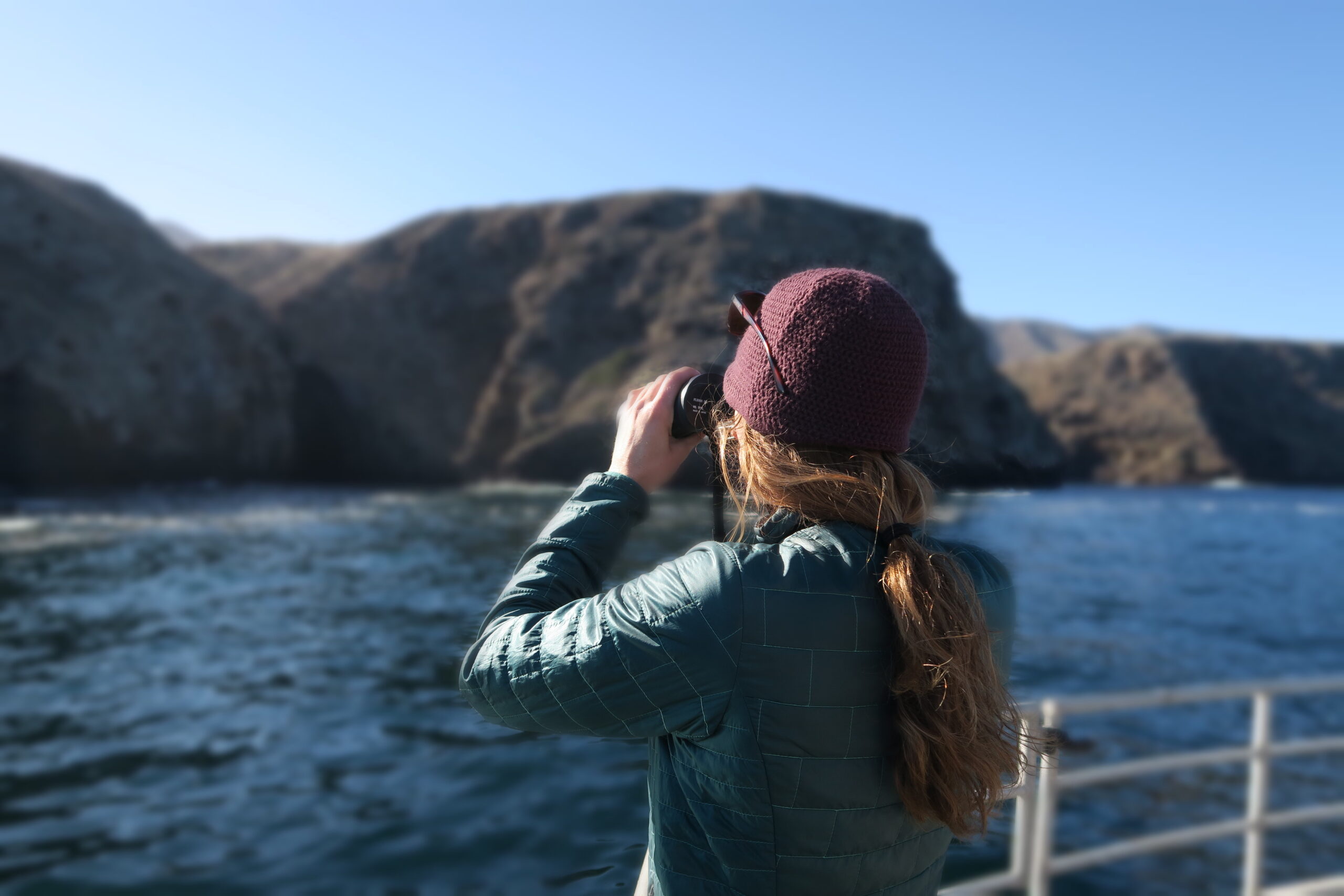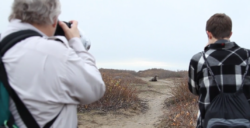
Marine Manners 101
Our marine sanctuaries are for everyone to enjoy and explore, with most of these public waters open to sustainable activities such as fishing, diving, paddling, and wildlife watching!
By being good guests to these national treasures and enjoying them responsibly, we can preserve and protect them as travel destinations for future generations.
Here are a few of our go-to guidelines to mind your marine manners when visiting our ocean, coast, and Great Lakes:

Photo credit: Matt McIntosh
Know before you go – Read up on local species, popular viewing sites, water and weather conditions, and local regulations to get the most from your visit. Each of our national marine sanctuaries have a helpful website and other free educational tools designed for recreation and tourism.
Choose your own adventure – If you prefer to stay on shore, stop by a national marine sanctuary visitor center or partner museum or aquarium. They have experts and exhibits for you to see the wonders beneath the waves without even getting your feet wet!
To get out on the water, consider booking excursions with a marine sanctuary-recognized vendor or tour operator, like a Blue Star dive shop or fishing charter, to support local businesses that promote conservation and responsible recreation!

Photo credit: NOAA Office of National Marine Sanctuaries
Give species their space – We all want an up close and personal experience with our favorite animals, but animals don’t always want the same. For your safety and theirs, appreciate wildlife from a respectful distance (a good rule of thumb is at least 50 yards away) and use binoculars, spotting scopes, or cameras with zoom lenses instead.
Sharing is caring, but not when it comes to feeding wildlife. Not only does feeding wildlife discourage them from foraging on their own, but the food we eat can be harmful to the animals we love. Even if it’s just a tiny morsel, animals learn quickly to return to areas where they have found food before. Animals can put themselves in harm’s way by regularly approaching people, especially if they learn to be pushy or aggressive in pursuit of food.
Hands off, cameras on – Animals in their habitats are not interested in being touched. From their perspective, you could be a threat to their safety or the safety of any offspring they might be caring for. However, it’s fine to take all the photos you want (from a safe distance) to share with friends and family. Just remember to use a zoom lens and turn the flash off first!
Sadly, there is also a chance that you could encounter a sick or injured animal.
The best thing to do in these situations is to call a wildlife response hotline to report what you’ve seen and stay nearby until trained help arrives. Local authorities or the NOAA Fisheries stranding network hotline are trained to respond to reports of animals in distress and will ask you to help by providing your location, a description of the animal and its condition, and may ask you to keep eyes on the animal and make sure other visitors know that trained responders are on the way.
Leave no trace and keep your snacks to yourself – Be sure to leave the shores you’re exploring better than when you arrived!
Pick up all your trash so that marine creatures don’t mistake it for their next meal or become entangled in plastics or other discarded debris. Bonus points if you remove and recycle a few pieces of trash that someone else left behind!
Watch your step and be mindful of plants and invertebrates, and don’t take anything home with you (other than your trash!).

